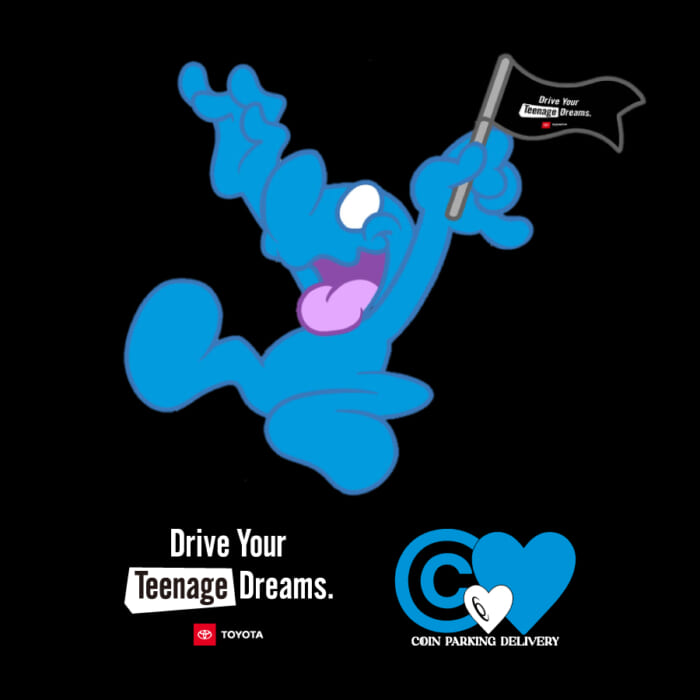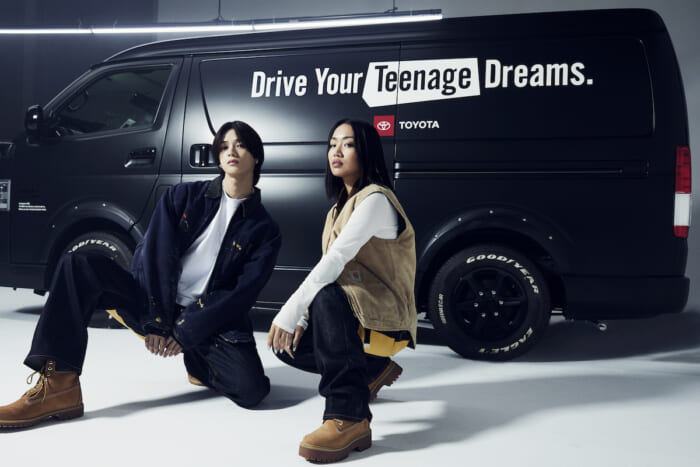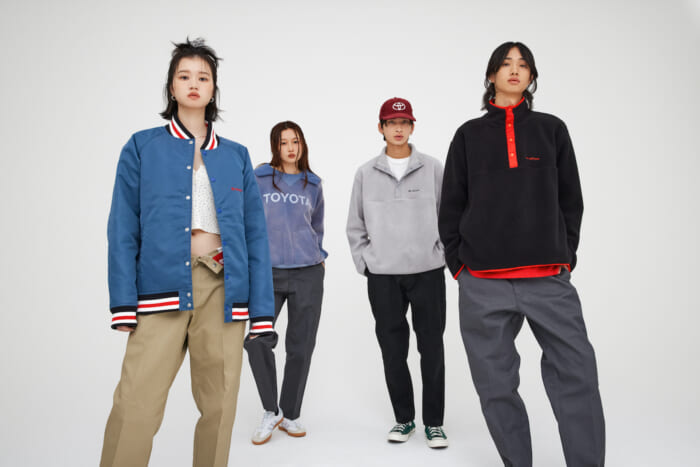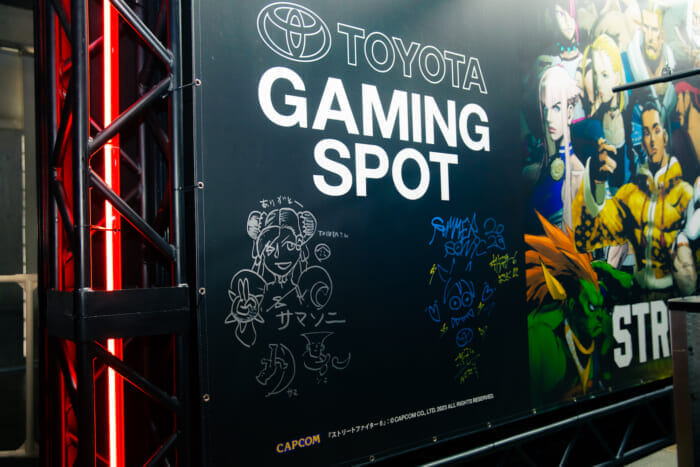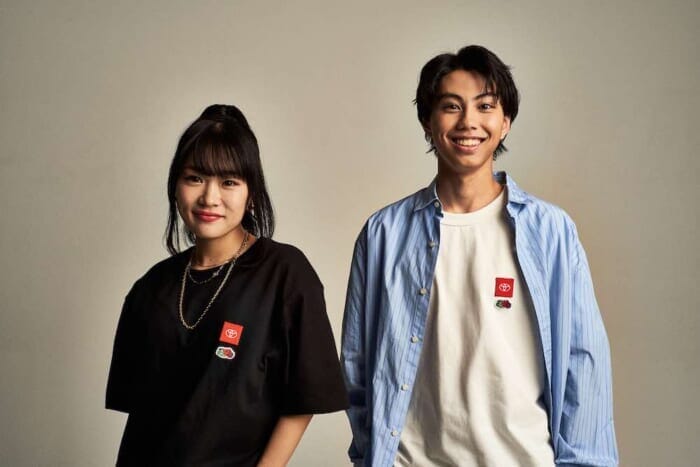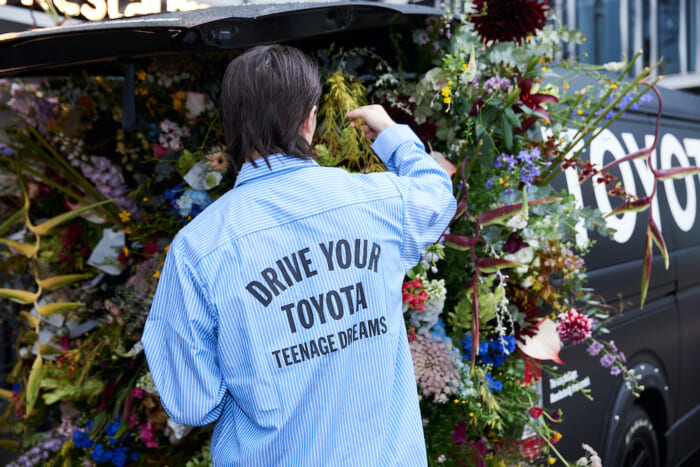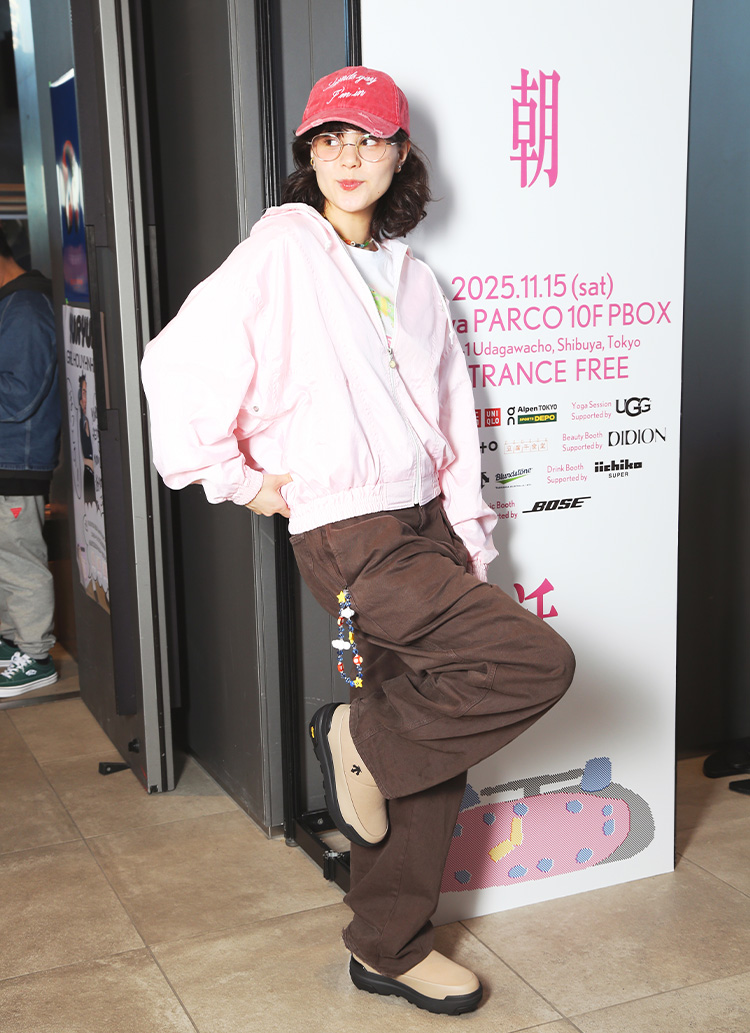Riding in a car is more than just a means of transportation, connecting the dots to your destination. It is a way to enjoy the scenery, listen to music and radio, and enjoy driving. And just as there have been many great cars in the past, the design of a car is a unique thing that inspires creativity. Cars, which are both pleasing to drive and to look at, are special in that they provide creators with new inspiration and hints for their creations. We caught up with Takayuki Fujii, designer of "Non-Native," on a day in Kagawa, Japan, where he got behind the wheel of Toyota's popular SUV "Corolla Cross.
PROFILE
Born in Nara Prefecture. After working as a staff member of a major select store, he became a designer of "nonnative" in 2001. His items are based on work and military wear designs, which he reconstructs with attention to detail in materials and sewing, and are favored by many fans as adult standards with enhanced comfort while utilizing conventional design and functionality. He supervised the design of "halfTen," which released its first season last fall/winter, and is currently challenging new values in sportswear.
A car that is good to drive and good to look at,
In search of the essence of manufacturing.
Check out the Toyota "Corolla Cross"!
A Corolla Cross glides along a driving route along the beautiful Seto Inland Sea. At the wheel is Takayuki Fujii, a fashion designer with a tremendous following. Mr. Fujii is the designer of "non-native," a brand that thoroughly researches universal archives such as military and work, extracts and reconstructs functions incorporated in fabrics, sewing, and details, and also supervises the design of "halfTen," which was launched last year. Mr. Fujii, who also supervises the design of "halfTen," which was launched last year, says that he has rediscovered the appeal of "Made in Japan" over the past few years.
Nowadays, the design of clothes has shifted from energetic designs with large brand logos to simple but highly functional "real clothes". The fashion scene as a whole is undergoing a major transformation, but we at Non-Native are convinced that we can match our past approach of "taking the time to carefully make truly good products," and at the same time, we are reaffirming our sincere attitude toward "Made in Japan" craftsmanship. At the same time, it was an opportunity for us to reaffirm our sincere attitude toward "Made in Japan" craftsmanship and its appeal.
Mr. Fujii has been traveling around Japan by car in search of hints on fabrics, sewing, dyeing, and other important elements of clothing production. He has been outputting the charm of Japanese craftsmanship in the form of his creations, making the most of the experience he has gained from his visits to the field.
Don't push your knowledge." And don't dig too deep (laughs). The story behind the clothes is only for those who want to know, and sometimes it is not important to the buyer where the clothes were made or what techniques were used to dye them. In short, as long as it looks cool, it's good enough. I think it is the same with cars. It is important to be satisfied when you drive it or look at it and think it is cool. Therefore, I don't want to show off the knowledge I have accumulated through digging, and I think it is necessary to eliminate the nostalgic part of me. I have great expectations that in the places I will visit, I will be able to see wonderful works of art and the spirit of craftsmanship that cannot easily be described in logical terms.
Mr. Fujii drove his Corolla Cross to a furniture factory in Takamatsu City, which he had always wanted to visit.
What is the appeal of Toyota's "Corolla Cross"?
I feel the pride of a master furniture designer & architect,
Thorough and uncompromising approach to manufacturing.
We visited the George Nakashima Memorial Museum in Takamatsu City, Kagawa Prefecture. The memorial hall is adjacent to "Sakura Seisakusho," which currently produces furniture under the George Nakashima brand. The timeless design of the products, which incorporate the natural beauty of wood into furniture, is a major attraction. The products have a gentle form and texture that makes you want to touch them all the time, while taking advantage of the gentle texture that only natural wood can provide.
When I visited a café in Los Angeles, I came across a very nice looking chair and fell in love at first sight. That chair was the "Glass Seat" by George Nakashima. The item was vintage and very expensive, but I found a current version in a showroom in Ginza and bought it immediately. I can't describe how great George Nakashima is, but in a word, everything is "current. There is no period to the work.
Mr. Fujii was welcomed at the museum by Kosuke Nagami, president of Sakura Seisakusho. He gave us a special tour of the factory where George Nakashima furniture is made, and carefully explained the characteristics of each piece, the ingenuity incorporated into the manufacturing process, and the actual conditions surrounding the materials used.
One of the characteristics of our work at George Nakashima is our unique methodology, in which we do not process wood to create what we want to create, but rather look at the wood and think about what kind of design we can create from it. This love and respect for natural wood as a material sets him apart from other furniture designers. Also, the attention to detail in the small parts that make up the furniture, especially the pursuit of texture, is also worthy of special mention (Mr. Nagami).
As Mr. Fujii looked around the factory, his attention was drawn to the lint used for the seat of the "Glass Seat Chair," one of the company's most popular products. It is an important part of the seat of the "Glass Seat Chair," but the production of lintel made in Japan is decreasing and will eventually disappear, he said.
I was surprised to see how the craftsmen cut off the small flakes coming out of the string one by one by hand. I also have to take my hat off to the craftsmen who have the integrity to say that they will not make a "glass seat chair" if they run out of the lint.
The difficulty and importance of continuing to pass down the tradition.
That is the very essence of the Corolla brand.
After leaving the memorial hall, Mr. Fujii got into his Corolla Cross and resumed his drive toward the Seto-ohashi Bridge, flowing along the seaside route. As he recalled George Nakashima's attitude toward manufacturing and Sakura Seisakusho's work to faithfully inherit and reproduce it, Fujii said he felt anew that he was in the right place at the right time.
George Nakashima's approach of looking at the wood and finding what to make from it. I often think about what kind of clothing to make and what kind of design to create based on the fabric, so I felt the same sense of purpose and sympathy. When you start manufacturing in this way, usability comes before design, doesn't it? It is important to create "products" that are easy to use, rather than "works of art" that focus on the status of the brand or the prominence of the designer. I was able to confirm once again that my way of thinking about "good things" is not mistaken.
He also said that such "good things" are naturally inherited by people and sublimated with their own stories.
The Corolla brand was born in 1966. In this way, each generation of the Corolla has its own feelings and memories of the many places it has been taken. That is a wonderful thing, and I don't think it is so easy to pass them on.
Of course, the Corolla Cross also offers excellent features such as driving performance, spacious interior, and a luxury feel at an affordable price. The design is cool, but not too eccentric or pointy. I can relate to this design philosophy. If something is not "good" in this way, it will be eliminated and will not be passed down from generation to generation.
I would like to know more about Toyota "Corolla Cross"!
The essence of what I have experienced firsthand at the manufacturing site and
The standard of good things where NONNATIVE values intersect.
Later that day, we visited Mr. Fujii in his Tokyo office to learn that he had completed a new sample, scheduled for release in April, that incorporates the approach to manufacturing that he had sensed during his experience in Kagawa with Corolla Cross.
At Sakura Seisakusho, we were able to experience the spirit of craftsmanship that makes use of the craftsmanship and materials of Made in Japan, a tradition that continues to be passed down from generation to generation. And from the Corolla Cross, I was able to experience one answer to the question of how to create new products that are both user-friendly and cool for a big brand that is widely accepted by the masses.
In front of Ms. Fujii, a sample of a work jacket set-up created for the 41st collection of "Non-Native".
The fabric is dyed using the Nakajirozome technique from Okayama Prefecture. The white part in the center of the yarn is left to dye, which gives it a nice texture with just the right amount of stretch. We did this by trial and error, taking into account the expansion and contraction that occurs during dyeing and the hardness of the material... We don't really want to push this kind of story on you, but first of all, we want you to pick it up because it is "cool". It is not cool to put the creator's ego forward (laughs).
We do not talk too much, we do not decorate too much, and we pursue "good things" with sincerity. This attitude is the reason why "Non-native" has been supported by many fans for many years. The day in Kagawa was a trip to reaffirm that this policy of craftsmanship is not mistaken, and it must have been a path that led us to a new creative direction.
PR antenna* (Japanese only)
Sponsored by Toyota Corolla Cross
Text: Noritatsu Nakazawa
Photo:Yozo Yoshino




